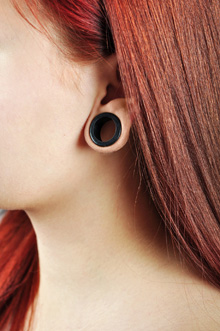Piercing
Piercing earlobes and putting on jewelry has been very common around the world for thousands of years for both cultural and cosmetic reasons. Ear piercing should always be performed in a clean environment because of the risk of more serious complications from infections or improper placement of instruments.
Piercing the cartilage is not a very good idea. Numerous instances of cartilage and soft tissue ear infection have been reported when ears have been pierced in non-medical settings. It can cause perichondritis, an infection of the outer ear that may require hospitalization. To minimize the risks, always go to a professional ear piercer in a clean environment. If you notice any symptoms such as redness, tendern¬ess, and swelling, remove the earring and go see your doctor. Here are some tips for pierced ears:
- Always wash hands before touching newly pierced ears.
- Keep the starter earring for six weeks to prevent the piercing from closing.
- Wash ears regularly with soap and water.
Ear Lobe Repair
As we age, our ears lose collagen and elastin just like the rest of our skin. The lobes can start to droop and cannot hold the weight of jewelry. Additionally, individuals with high gauge plugs that stretch out the earlobes oftentimes want to remove them due to job requirements or a change in taste. When the earring is removed a large hole remains which will be reduced only slightly over time. Surgery is required to fully close these holes and can be done by a plastic surgeon with local anesthesia. In most cases, ears can be re-pierced within three months after surgery. However, it is very important not to re-pierce your ear in the scar, or just above the scar, since the tissue of the scar will be weaker than the surrounding tissue.

